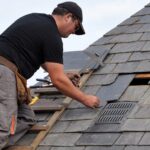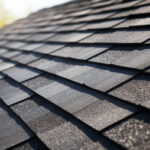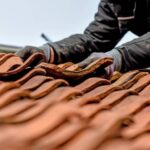For any homeowner considering a roof installation or replacement, the question, ‘Should I put ice and water shield on my entire roof?’, often arises. This fundamental decision not only affects the overall longevity and effectiveness of your roof but also impacts your home’s safety and comfort. To make the most informed choice, understanding what an ice and water shield is, and its role on your roof, is crucial.

What is Ice and Water Shield?
An ice and water shield is a protective underlayment installed beneath your roof’s shingles. It offers an extra layer of protection against water damage from ice dams, wind-driven rains, and other natural elements that could penetrate your roof.
How Does It Work?
This sticky-backed polymer and asphalt membrane adheres to the roof deck, creating a watertight seal. When installed properly, it prevents water from seeping into your home, a common concern especially in colder climates where ice dams can form.
Reasons to Consider Ice and Water Shield for Your Whole Roof
While traditionally installed on roof edges and valleys, many homeowners are now contemplating whether they should extend the ice and water shield to cover their entire roofs.
Extended Protection in Severe Climate
In regions prone to extreme weather conditions such as hurricanes or heavy snowfall, full coverage can provide peace of mind. It acts as a formidable barrier, shielding the roof deck from rainstorms and melting ice.
Preventing Costly Repairs
Investing in comprehensive protection can lead to considerable savings. By preventing leaks and water damage, you reduce the risk of expensive repairs down the line.
Where is Ice and Water Shield Typically Installed?
Let’s explore where this material is most effectively placed:
Valleys and Vents
These are regions where water flow intensifies, making them vulnerable to leaks. Installing shields in these areas helps reinforce them.
Along Eaves and Roof Edges
These edges often suffer from ice dam formations. Using ice and water shields here minimizes the risk of water seeping beneath shingles.
Insights from Roofing Experts
Many roofing experts suggest full roof coverage in particularly harsh climates or for homes in wooded areas where debris build-up poses a threat.
Debunking Myths About Ice and Water Shield
There are many misconceptions regarding the ice and water shield, which deserve clarification:
Is It Expensive?
Though there is an upfront cost associated with covering the entire roof, the long-term savings and protection it offers often outweigh the initial investment.
Will It Trap Moisture?
Proper ventilation and professional installation are key. When correctly applied, an ice and water shield does not trap moisture but defends against it.
How to Choose the Right Ice and Water Shield
The efficiency of your roof’s protection depends significantly on selecting the right product:
Material Quality
High-quality membranes are more durable and offer better protection, ensuring your roof’s longevity.
Professional Installation
A certified professional installation guarantees an optimal application, avoiding future complications.
Steps for Installing Ice and Water Shield
Preparation
Start by clearing debris and ensuring a clean roof deck. This sets the stage for a secure installation.
Adhesion and Sealing
Apply the shield with careful attention to the roof deck’s surface and joints. Ensure it adheres without air pockets or wrinkles.
Coverage Calculations
Learn more about necessary coverage and product specifications at Roofing Calculator.
Pros and Cons of Full Roof Coverage
Advantages
- Comprehensive weather protection
- Increased home value
- Potential insurance savings from minimized risks
Drawbacks
- Higher initial costs
- Poorly installed shields might trap moisture if incorrectly installed
Conclusion
The question, ‘Should I put ice and water shield on my entire roof?’, leads many homeowners to weigh pros and cons seriously. By understanding the inherent benefits and attending to potential challenges, one can make an informed decision. Understanding insurance coverage for roof-related damages is also essential in this decision process.

FAQs
Can you install an ice and water shield over old shingles?
No, the old shingles must be removed to ensure the shield properly adheres to the roof deck.
Is an ice and water shield necessary for all roof types?
While beneficial, its necessity depends on your location’s climate and roof design.
Does homeowners insurance require an ice and water shield?
Policies vary; check with your insurer. However, having it can offer peace of mind and proactive damage prevention.
This article contains affiliate links. We may earn a commission at no extra cost to you.








